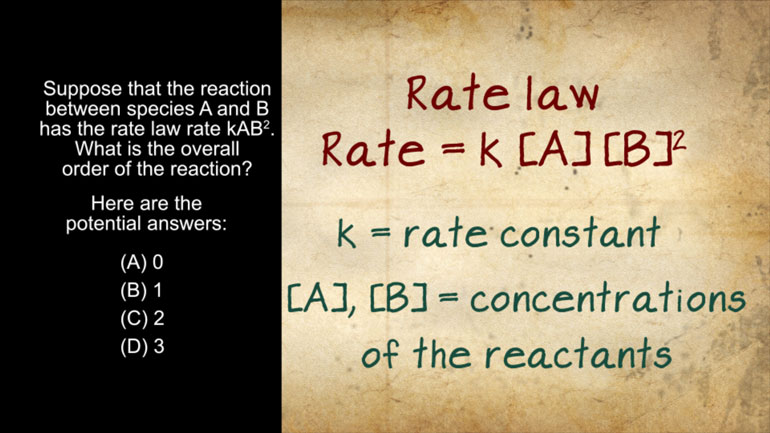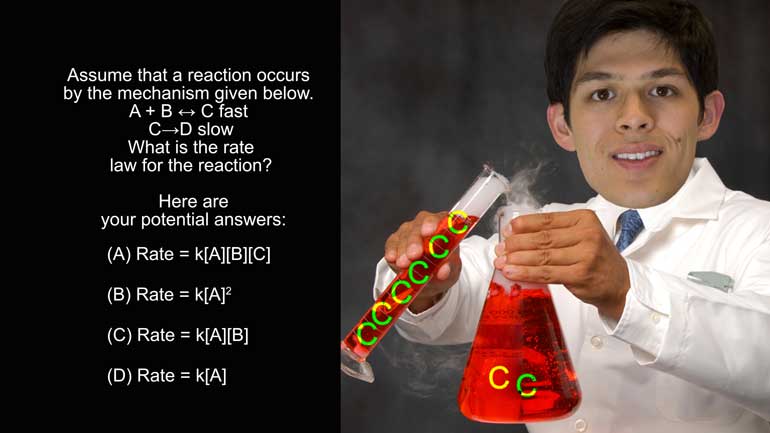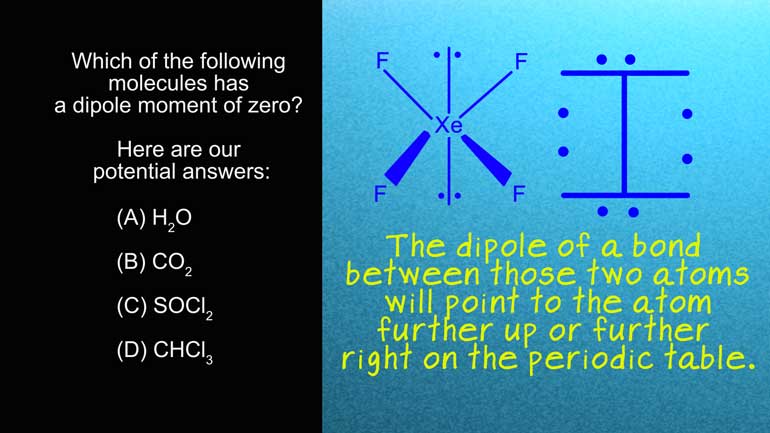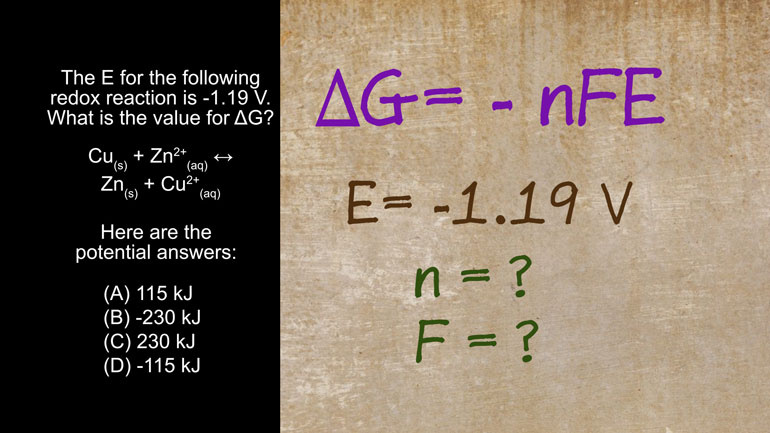ShmoopTube
Where Monty Python meets your 10th grade teacher.
Search Thousands of Shmoop Videos
AP Chemistry 2.1 Laws of Thermodynamics 21 Views
Share It!
Transcript
- 00:04
And here's your Shmoop du jour, brought to you by the unbreakable second law of thermodynamics. [A boy practicing karate on a book of thermodynamics]
- 00:09
Other unbreakable laws include: “Eat your vegetables” and “Sharing is caring.”
- 00:14
Okay, here's today’s question.
- 00:16
Which of the following would cause an increase in entropy?
- 00:19
And here are our potential answers. [mumbling]
Full Transcript
- 00:21
By the way, that N.O. in answer D?
- 00:25
Yeah, it’s not the opposite of “YES.” [A girl looking confused]
- 00:27
It’s nitric oxide, people.
- 00:28
That’s not to be confused with nitrous oxide, better known as laughing gas. [Students laughing in class and teacher asks what is funny]
- 00:34
But who needs laughing gas when you’ve got us, and our dazzling sense of humor?
- 00:39
Anyway, let’s get this thing going.
- 00:41
To answer this question, we probably need to know what the heck entropy is.
- 00:43
Well, according to the unbreakable second law of thermodynamics, the overall entropy [Image of a galaxy in a thermodynamics book]
- 00:48
in the universe never decreases.
- 00:51
Increasing entropy means a dispersal of energy or matter.
- 00:54
This leads to increased disorder or messiness. [A boys bedroom door opens and lots of mess inside]
- 00:58
So yes, your bedroom is messy and the Universe is, too.
- 01:03
Try that one on Mom and Dad. Good luck!
- 01:05
All right, we have to think about which of our answer choices describes an increase in
- 01:08
disorder or dispersal.
- 01:11
We know that the molecules in a gas are more spread out than in a liquid, and the molecules [Molecules in liquid bouncing up and down]
- 01:14
in a liquid are more spread out than in a solid.
- 01:17
The molecules in a gas are the most dispersed and most disordered…gases have the highest
- 01:22
entropy.
- 01:23
Okay, so let’s look at choice A. Freezing water represents a liquid to solid
- 01:27
phase change, which corresponds to decreased disorder and thus decreased entropy. [Molecules inside an ice cube]
- 01:32
So we can lose A. Those solid molecules sure are orderly, but
- 01:36
jeez, they don’t have much fun.
- 01:38
Could it be C - crystallization of salt from a supersaturated solution?
- 01:42
Well, like freezing water, this answer describes a transition from the liquid phase to the [Molecules bouncing in a wine glass]
- 01:46
solid phase, which corresponds to a decrease in disorder and thus a decrease in entropy.
- 01:52
So say bye-bye to C. Choice D describes a reaction in the gaseous [Gaseous molecules in disorderly fashion]
- 01:56
phase.
- 01:57
We have two molecules combining to form one—matter that was once dispersed is now more compact.
- 02:03
This is a decrease in disorder, and thus a decrease in entropy, and thus a decrease in
- 02:07
our interest in choice D. That leaves us with choice B, boiling water. [A pan of boiling water]
- 02:12
Boiling water represents a liquid to vapor phase change, which corresponds to increased
- 02:16
disorder and thus increased entropy.
- 02:18
That means that B is our answer.
- 02:20
Hey, now that you know your second law of thermodynamics…maybe you could – we don’t
- 02:24
know - clean your room? [boy using a vacuum in his room and mother watches]
- 02:25
Just a thought.
Up Next
AP Chemistry 1.3 Chemical Reaction Rates. What is the overall order of the reaction?
Related Videos
AP Chemistry 1.4 Chemical Reaction Rates. What are the correct units for a second order rate constant?
AP Chemistry 1.5 Chemical Reaction Rates. What is the rate law for the reaction?
AP Chemistry 3.2 Laws of Thermodynamics. What is the value for ΔG?




